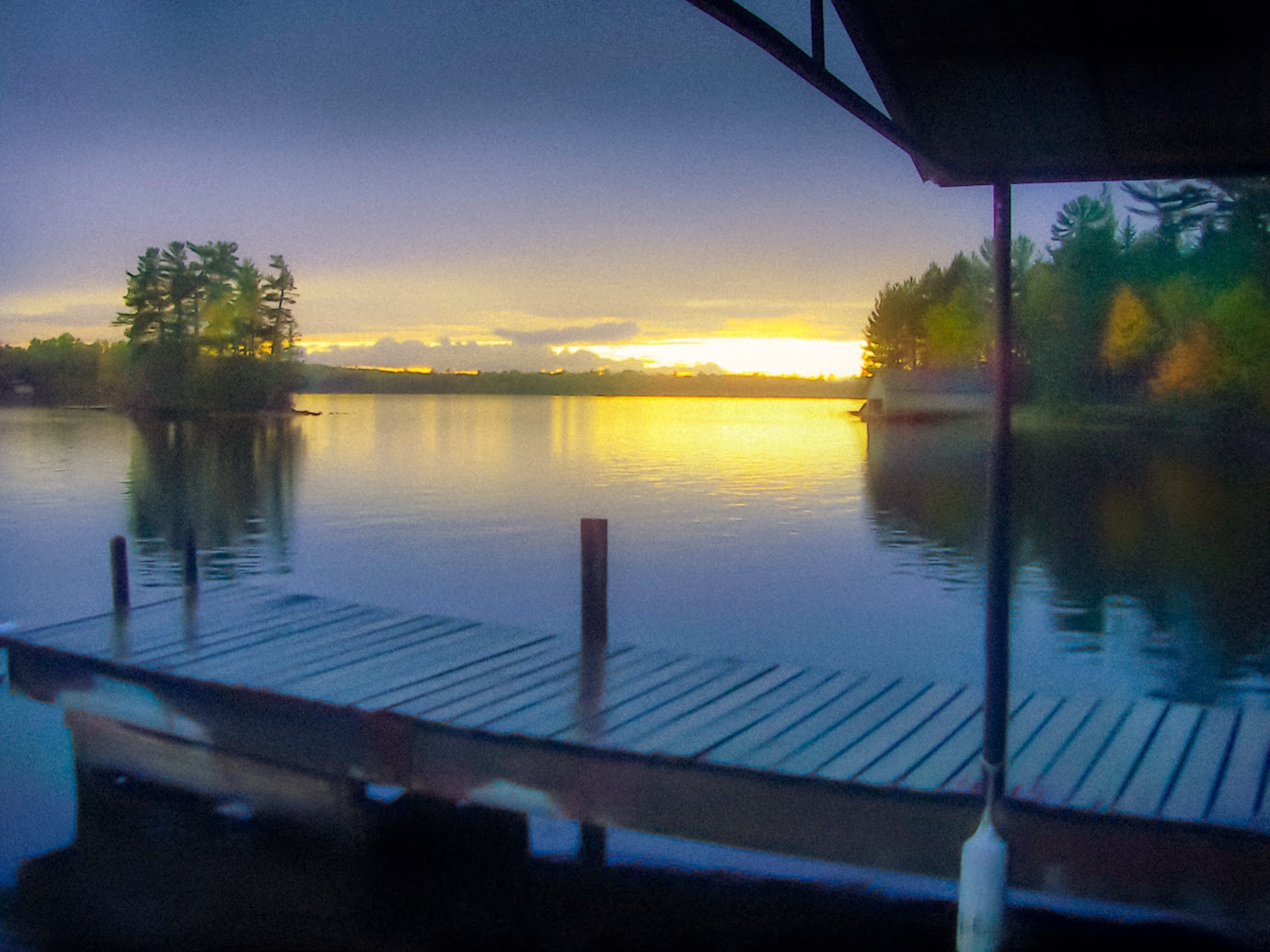OK... Your neighbor is burning leaves, and you can't open your windows on one of the last nice fall days. Or even go outside for that matter without choking on smoke. So what do you do?
Make art of course!
The top image is the original of the smoke coming through the trees in the morning light. I made minor adjustments in Lightroom of increasing contrast, decreasing highlights, and increasing clarity a bit.
The second is after I used Topaz Clarity to change the whole color scheme pushing green, yellow and red to their warmer settings. I also used Photoshop to tint all whites to blue which increased the color contrast of the now bluish light against the warmer trees. This image is all about contrast and not only tones, but colors must be emphasized.
In the next image I used Topaz Simplify to remove a lot of the needless and distracting detail. Back in Lightroom I used Split Toning to once again turn highlights towards a bluer tint.
For the last full size image after I'm done playing around I'll sometimes take the original image and my final affected image, and put them both onto separate Photoshop layers in a new file. I'll then merge these two images. In this case merging is done by decreasing the opacity of the top layer by 50% so that you see 50% of both images. That is, you get 50% of all of my changes on top of the original.
That's fine when displaying a low resolution image on the internet. but what if you're going to print the image in a 20x30 inch format, which is my typical goal? The final image below is what a portion of the image would look like when printed in large format. This is something else entirely as far as image editing.
Many more steps are involved using Lightroom, Photoshop and Topaz filtering in order to produce an image which looks pleasing in large format. You can see that the last image below isn't sharp for one thing. We eliminated detail early on, but new types of detail will need to be add via Topaz. For example, edge and pattern delineation which will provide a more graphic/drawing appearance.
But now the sun is getting low in the distance and it is time for me to get out there a burn some leaves of my own!



















